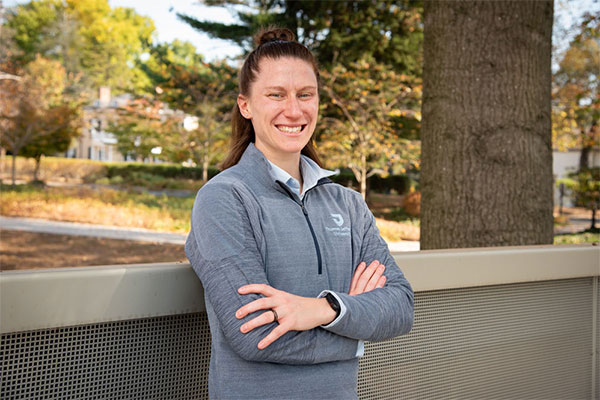Rewiring Rabies
A researcher’s journey into understanding a deceptively simple deadly disease to develop promising vaccines.
In 1990, rabies surged in the red fox population in East Germany, following the fall of the Berlin Wall. Rabid foxes roamed the countryside as well as the city. Reports said that at least 10 people had been bitten, putting them at risk. Researchers restarted the large-scale rabies oral vaccine program to slow the spread. The vaccine was air-dropped throughout the countryside and hand-placed near fox dens in morsels of fox food, like chicken heads.
At the time, Matthias Schnell, PhD, was a young graduate student in the middle of completing his thesis at the Federal Research Centre for Virus Diseases of Animals in Tübingen. The government quickly made research funds for rabies available. While most of the funding was dedicated to vaccine development, some was set aside to help understand the molecular basis of the virus. And Dr. Schnell and his team were able to sequence and generate the entire rabies genome – a big accomplishment in the early days of genetic sequencing. Although their molecular breakthrough did not directly contribute to the country’s efforts to make the oral vaccine for rabies, which eliminated the disease officially in 2008, it did help create a new generation of vaccines for wildlife and domesticated animals and helped make the oral vaccine even safer.
Dr. Schnell’s early success and path to biology were somewhat unexpected. As a boy, Dr. Schnell collected butterflies, raised frogs, and was surrounded by animals, becoming fascinated with the natural world. However, he grew up in the city of Stuttgart, known for the excellent craftsmanship of famous brands like Porsche and Mercedes-Benz. His father was an electrical engineer and Dr. Schnell spent his early years in the company of people who built complex machines. While he respected that work, Schnell wasn’t interested in the mechanics of built structures.
“I was more interested in being an engineer of things in nature than an engineer of things made by man,” Dr. Schnell says.
After deconstructing the rabies genome and finishing his PhD, Dr. Schnell went to Yale University as a postdoctoral researcher, where he learned to work with a virus similar to rabies, exploring how it could be used to create vaccines, with the ultimate goal of applying that knowledge back to building a better rabies vaccine.
Rabies had caught his intellectual curiosity because once symptoms develop in an infected individual, it is 100% fatal, making it one of the most deadly diseases in the world, Dr. Schnell explains. And although it is a dangerous disease – making animals more aggressive and fearless, and therefore more likely to spread the virus – it is also relatively simple in its makeup. Humans have some 20,000 genes, whereas the rabies virus has just five. “Because it’s so small, we know every base and every function, making this virus so versatile as a base for vaccine production,” Dr. Schnell says. “But we still don’t understand the whole thing.”
In the summer of 1997, Dr. Schnell joined the faculty at Thomas Jefferson University, where he continued his work on rabies, and is the Dr. V. Watson Pugh and Frances Plimpton Pugh Professor of Microbiology and Immunology. He focused on two main areas: the basic pathogenicity and molecular biology of the rabies virus, and the development of rabies-based vaccine platforms. His successful engineering has brought to life vaccines against emerging diseases, such as Ebola and Marburg fever, which are major threats in Africa. These vaccines hold the added benefit of protecting against rabies as well, which continues to be fatal in parts of Africa.
One of Dr. Schnell’s most recent and promising projects is a vaccine for Lassa fever called LASSARAB, which recently received FDA approval to begin phase one clinical trials. Lassa fever is a severe hemorrhagic disease that is endemic to parts of West Africa, causing up to 500,000 infections and over 5,000 deaths annually. There is no vaccine currently to protect against infection. Dr. Schnell’s vaccine is one of three candidates in development. It uses a rabies virus modified to be harmless and trains the immune system to recognize and fight Lassa fever while also providing long-term protection from rabies in a single dose.
Dr. Schnell’s lab is also currently developing a vaccine against the H5N1 avian flu intended for cattle, to help prevent transmission of the disease from cows to humans.
“I’m proud of the impact this work has had on rare diseases,” he says. “As a basic scientist, you rarely see the direct impact of your work, so it’s quite exciting seeing the difference it can make in people’s lives.”



